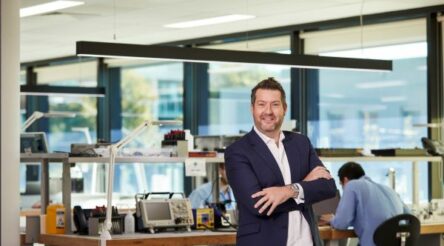Digital opportunity to re-build manufacturing – by Matthew McKnight

Manufacturing was transforming itself even before the Covid-19 pandemic, adopting digital solutions. But to regain leadership in manufacturing, new thinking is needed that builds on lessons from other sectors, argues Matthew McKnight
The boom in global trade, increasing inflation, and global supply chain disruptions from the Covid-19 pandemic have left Australia’s manufacturing sector in disarray.
The balancing act between rapidly modernising industries and skills shortages have meant many manufacturers are struggling to keep up despite significant efforts.
Assembly lines have moved online where they weren’t already automated, and the new technology adopted during the remote working days of the pandemic are now a staple, creating further pressure.
Australian Industry Group’s latest Performance of Manufacturing Index indicates the post-Covid expansion is beginning to turn to contraction, and manufacturers are looking to new solutions to change direction.
Until about five years ago, Australian manufacturing saw significant evolution, including the use of digital tools as a driver. Unfortunately, that momentum hasn’t kept pace due to aforementioned factors.
Today, teams are relying on outdated tools to solve modern problems. Not only are manufacturers missing out on the benefits of new, advanced technology, their ability to work alongside teams using more recent tools is diminished.
The new Labor government says Australia needs to focus on developing and maturing its modern manufacturing sector, dedicating $15 billion to the initiative.
Much of this will be focused on upskilling and training in new manufacturing technologies, and will provide incentives to business to update their tools.
The money is there, but the question is how to use it efficiently and quickly.
Cross-sector convergence is key to creating the manufacturing sector of the future.
Adopting skills and ideas perfected by other industries can produce better ways to create and design. Processes once unique to separate industries or organisations are now overlapping as conditions and requirements change. As supply chains merge globally our skills and tools must too.
Automation has long been the fail-safe for increased returns in manufacturing – cut your build times in half and costs will fall too. But the assembly lines of the modern day must reflect the digital transformation that has been underway in recent years.
There are very few manufacturing roles which only operate across one section of the business, so our business practices should reflect this. By combining and leveraging the skillsets from other teams you can find new and better ways of working.
If we build on the lessons from the architecture, engineering, and construction (AEC) sector, modular and mobile manufacturing could take pragmatic steps to overcome some of the supply chain delays and regulatory obstacles that exist.
Imagine a modular car which can be assembled anywhere in the world, and to any series of specifications. Not only does this type of manufacturing save a huge amount of time during the build, but it also reduces material wastage.
Outsourcing has become the norm, particularly during COVID. Although cheaper in the short run, it’s left a skills gap in local teams.
The money is there to train up a new generation of skilled workers, but this takes time – and technology is advancing faster than we can train workers.
We’ve seen brand new skillsets pop into existence as businesses begin to digitise, new ways of working, and new demands in existing roles.
The traditional factory floor role now requires a higher level of digital literacy than ever before.
The likes of 3D printing and additive manufacturing skills, digital analysis and diagnosis, programming and coding, and even mechatronic engineering are becoming common across industry.
Evolving our workforce and preparing workers for change can be a challenge, but building on existing skills and automating the rest can help.
As well as critical training, manufacturers can also look at transforming how their workforce is structured to best use existing skills as new capabilities are pragmatically adopted.
In addition, every organisation and sector has different strengths – learning and adapting with practices and insights from another industry stands to help businesses overcome the shortages.
Achieving this will take a cultural shift. Manufacturing no longer operates in a silo, and the best outcomes come from leveraging all the skills and tools available.
Slim profit margins, a contracting sector, and global instability have made it difficult for manufacturers to just trim the fat and carry on as they did previously.
Australia currently ranks last in the OECD for manufacturing self-sufficiency. Rebuilding the sector will have huge positive knock-on effects across the entire economy, including the Australians that keep it moving.
Restoring our previous leadership in the space means transforming practices, attracting the right talent who can disrupt the status quo, and underscoring the evolution of manufacturing with more of a digital mindset.
Matthew McKnight is the Senior Technical Manager, Design and Manufacturing, Autodesk.
Picture: Matthew McKnight
@aumanufacturing Sections
Analysis and Commentary Awards Defence Manufacturing News Podcast Technology Videos










